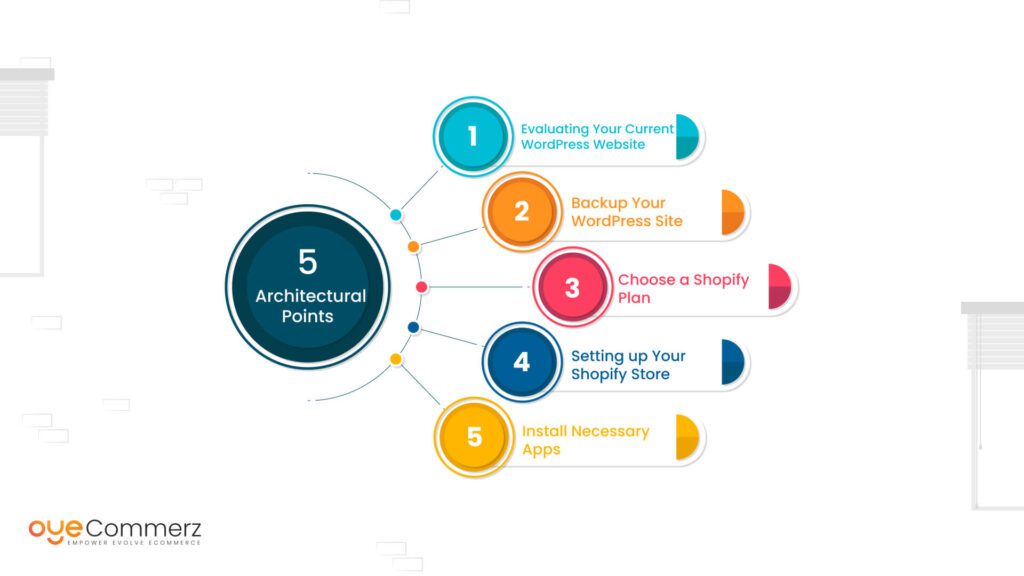Shifting from WP to Shopify marks an exciting step toward optimizing your online store operations. As companies grow, selecting a solution that supports scalability, user experience, and flexibility is essential. Shopify is widely recognized as a favorite for e-commerce professionals, providing superior flexibility, security, and user-friendliness. In this guide, we will delve into the transformative impact of this migration, discuss the advantages, and provide practical tips to facilitate a seamless move.
1. Top Reasons to Transition from WP to Shopify
The combination of WordPress and WooCommerce, has served countless online stores. Nevertheless, as companies scale, issues like plugin dependency, data risks, and technical complexities can hinder progress. Shopify, designed explicitly for digital retail, eliminates these issues with an comprehensive, intuitive platform. Real data supports this shift—Shopify powers over 4.4 million stores worldwide, with a reported 10% boost to sales conversion rates for many businesses after migration.
2. Shopify's Advantages for Thriving Online Stores
Shopify’s powerful platform caters for scaling brands. Its standout features are:
- Seamless Customization: Shopify provides over 80 professionally designed themes.
- Integrated Tools: Capabilities such as Shopify Payments and built-in SEO save time and effort.
- Global Reach: Currency versatility and localization features enable brands to reach global markets.
Additionally, Shopify delivers an uptime rate of 99.98%, ensuring your store remains accessible.
3. Preparing for WP to Shopify Migration
Prior to starting the migration process, evaluate your current store. Analyze product data, client information, and SEO performance. Tools like Shopify’s Migration Kit or external tools help ease the transition. Create a comprehensive plan, making sure all resources—item details, media files, and blog content—are ready for seamless import.
4. The Importance of Accurate Data Migration
Data migration is a cornerstone of a smooth platform switch. When migrating from WordPress to Shopify, prioritize:
- Product Information: SKU, item summaries, and groupings.
- Customer Data: Emails, purchase Shopify setup and customization records, and custom fields.
- Search Engine Considerations: Preserve meta tags, URLs, and redirects to maintain search rankings.
Leverage tools such as LitExtension to facilitate seamless migration while minimizing errors.
5. Customizing Your Shopify Store
After the move, personalizing your Shopify store helps it reflects your business identity. Take advantage of Shopify’s drag-and-drop editor to design pages effortlessly. Shopify's templates are mobile-responsive, providing a smooth user experience across devices—a key point, since 74% of e-commerce traffic comes from mobile visitors.
6. Maintaining SEO During Migration
Search engine optimization is crucial for maintaining your visibility during migration. Shopify is highly optimized for search engines with organized link formatting, built-in optimization tools, and smooth content management. Ensure:
- Implement 301 redirects for existing links.
- Optimize new pages with targeted phrases.
- Use Shopify's apps Plug in SEO Shopify data transfer services to monitor performance after the switch.
7. Post-Migration Testing
After finishing the transfer, run detailed checks.
Check: - Page load times (Shopify delivers faster speeds in contrast with WP).
- Functionality of payment gateways and checkout processes.
- Mobile responsiveness.
Quality assurance guarantees your store provides a seamless shopping journey from the start.
8. Real-Life Success Story
One such migration success story is Gymshark, a fitness apparel brand that moved to Shopify. Post-migration, the company experienced a 60% boost in mobile sales and significantly lowered site downtime. This showcases the capabilities of Shopify in enhancing e-commerce growth.
9. Challenges and Solutions
Migration is not without obstacles, such as data integrity and reconfiguring custom functionalities. However, Shopify’s extensive assistance and third-party experts make overcoming these hurdles manageable. Collaborating with experienced Shopify developers ensures a trouble-free transition.
10. Making the Switch: The First Step Toward Success
Migrating from WP to Shopify represents a strategic approach to online retail. By addressing scalability, simplifying management, and improving buyer satisfaction, Shopify empowers businesses to succeed in competitive markets.
Final Thoughts
Switching from WP to Shopify is a strategic move that can greatly enhance your e-commerce success. With a well-structured strategy, the right tools, and professional guidance, you can unlock new success milestones.
Ready to make the leap? Let’s discuss how our Shopify migration services can revolutionize your online store. Contact us now, or consider: Is it time to seize Shopify’s advantages for your store?
